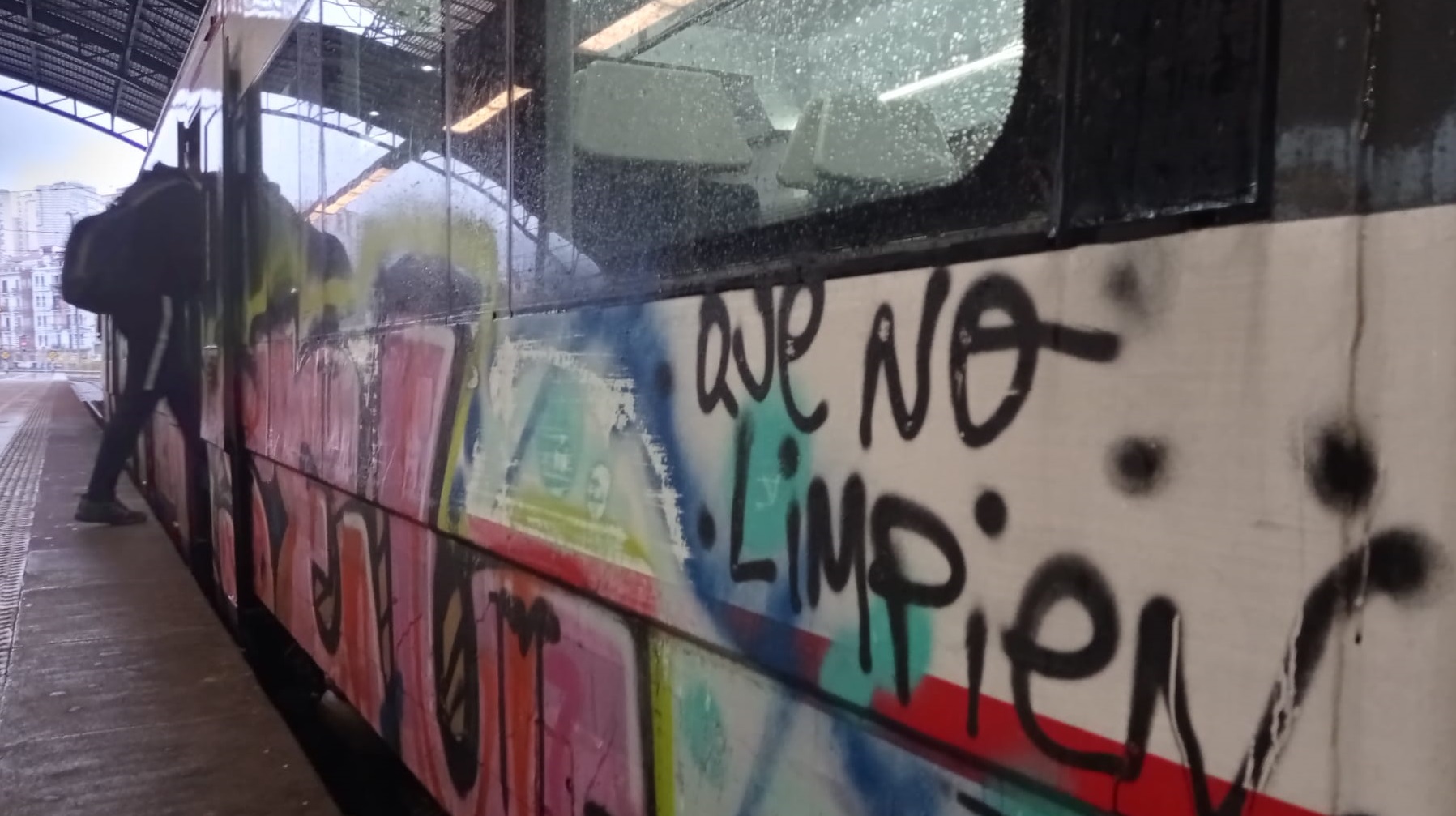
- Within the decline of the public transport service, although this is a purely aesthetic aspect, it has become usual to see the trains painted and, even if it is for once, it is not for economic reasons, as the workers have explained.

A few months ago there was no painted train at the service of Renfe’s C-3 line. But lately, it's become common to see the graphic-dotted units. Without entering into the legitimacy or quality of this type of artistic expression (since everyone will have their opinion or taste), it is that this aesthetic change has occurred in the context of the general decline of the service.
In fact, not seeing graffiti a few months ago doesn't mean they didn't do it, but they were cleaned immediately. At present, however, it does not occur.
Asked about this issue by Aiaraldea Komunikabideak to a representative of the workers of Renfe, he explained that, unlike in other areas (train repairs, accessibility, schedule compliance and lack of drivers…), the problem is not economic, or not just that.
Train accidents were attributed to liquid products used in the removal of graffiti.
In fact, it seems that a few months ago there were several accidents at the Abando train station, where there were cuts in trains and units leaving trains that are not in service. At first, the responsibility for these incidents was attributed to the liquid products used in the removal of graffiti.
Subsequently, it has been determined that the oil used in trains is the real cause of accidents, although, if not, cleaning tasks have not been restored.
In addition, there is the 2030 Agenda. In particular, there is no guarantee that all chemical waste generated at the Abando train station (both paint and solvents) will not end up in the estuary. As a result, the operators had to have started cleaning the repair at the Ollargan workshop, but apparently they have not yet done so.
